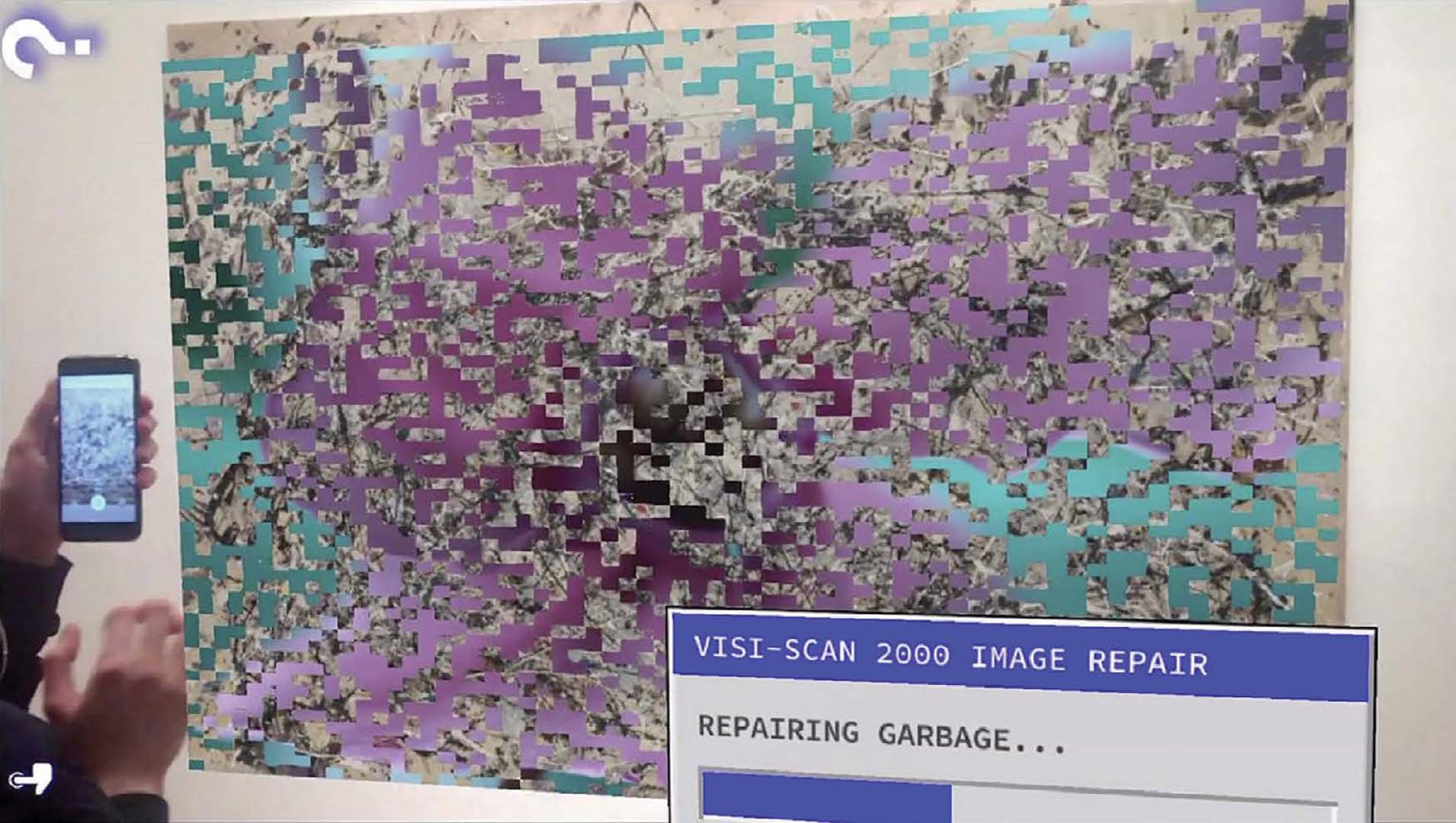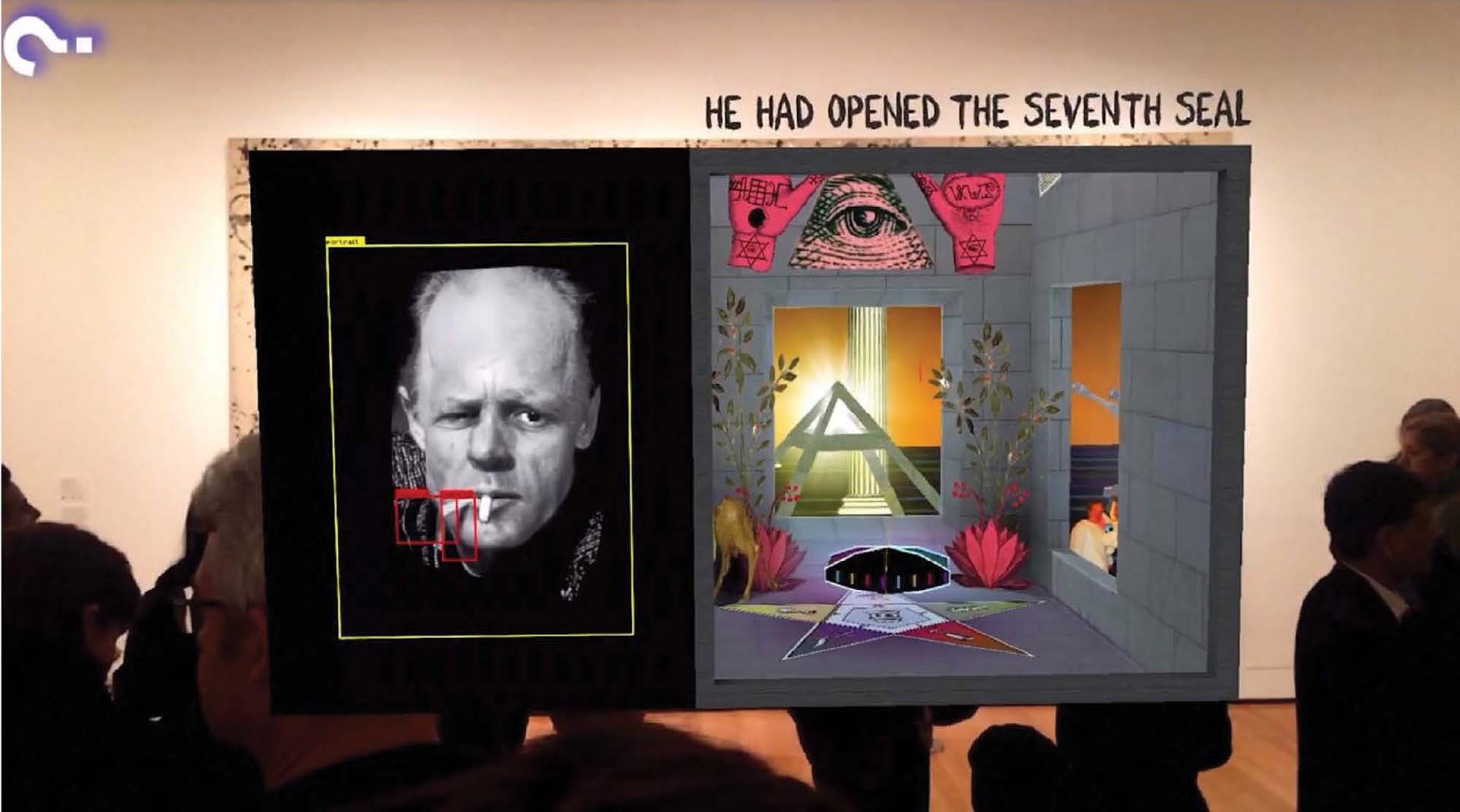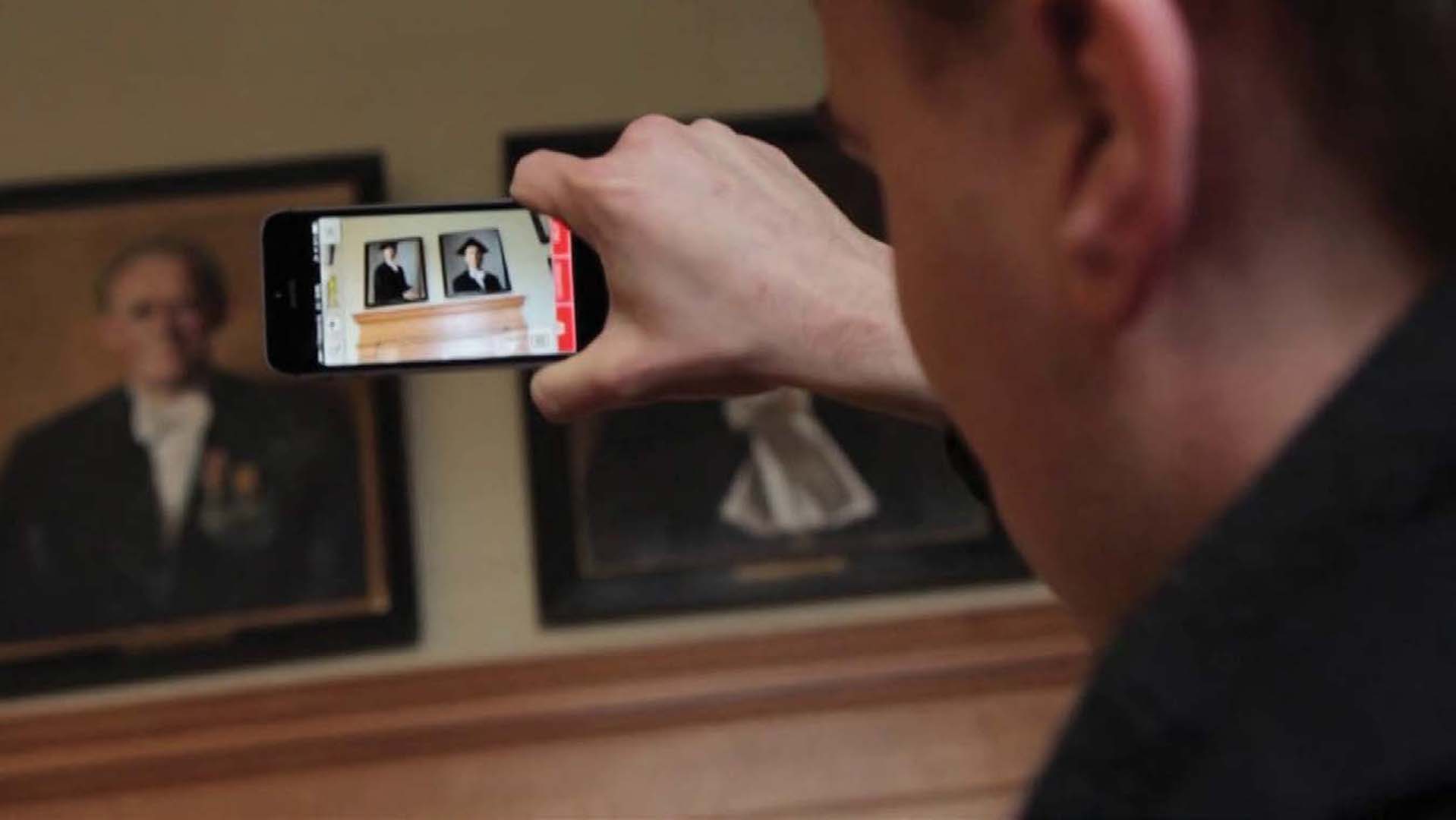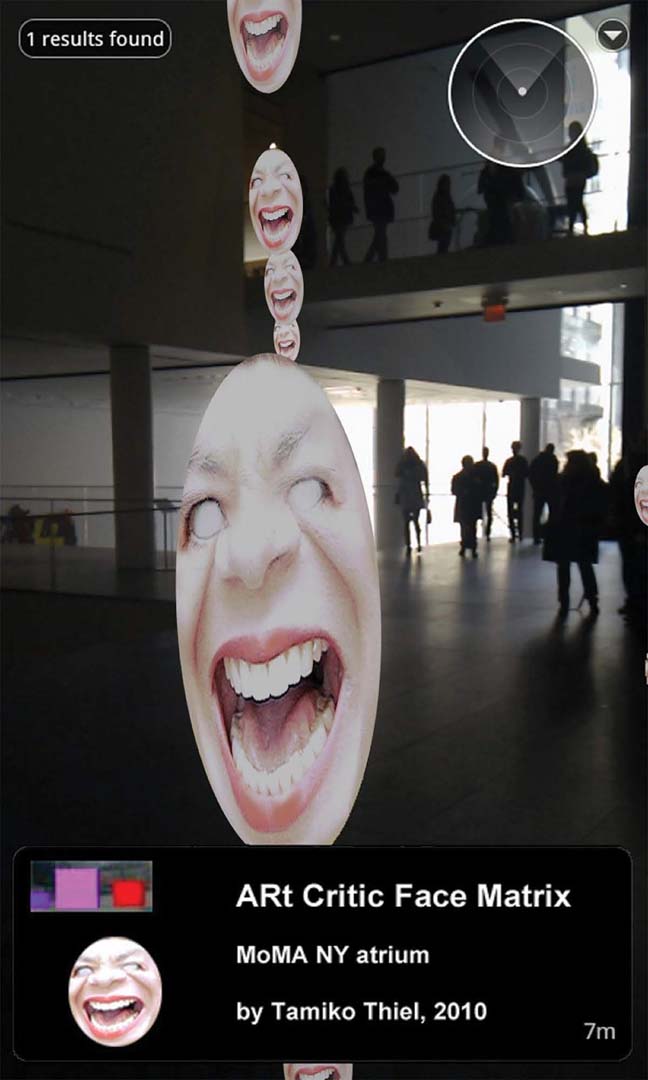“REALational Perspectives: Strategies for Expanding Beyond the Here-and-Now in Mobile Augmented Reality (AR) Art” by Efrat
Conference:
Type(s):
Title:
- REALational Perspectives: Strategies for Expanding Beyond the Here-and-Now in Mobile Augmented Reality (AR) Art
Presenter(s)/Author(s):
Abstract:
This article analyzes mobile AR installations in order to demonstrate different strategies for producing a relational sense of place and time. These installations combine multiple narratives in situ; thus, they reshape existing perceptions and influence national identities. By means of exposing actual environments as constructed and therefore as virtual landscapes, mobile AR art exposes our situatedness and becomes a strong tool for activism as it encourages us to think beyond familiar, material reality. As such, it rejects an absolute perception of reality and reconfigures it as a relational domain.
References:
- Mark Hansen, Bodies in Code: Interfaces with Digital Media (New York: Routledge, 2006).
- Jean Baudrillard, Simulacra and Simulation, Sheila Faria Glaser, trans. (Ann Arbor, MI: University of Michigan Press, 1994).
- John Perry Barlow, “A Declaration of the Independence of Cyberspace,” Electronic Frontier Foundation, 1996: www.eff.org/cyberspace-independence (accessed 9 April 2020).
- Slavoj ?i?ek, Welcome to the Desert of the Real (London: Verso Books, 2002).
- Paul Milgram et al., “Augmented Reality: A Class of Displays on the Reality-Virtuality Continuum,” SPIE: The International Society for Optical Engineering Proceedings 2351 (1994) pp. 282–292.
- Ronald T. Azuma, “A Survey of Augmented Reality,” Presence: Teleoperators & Virtual Environments 6, No. 4, 355–385 (1997); Maria Engberg and Jay David Bolter, “Cultural Expression in Augmented and Mixed Reality,” Convergence: The International Journal of Research into New Media Technologies 20, No. 1, 3–9 (2014); C?cile Chevalier and Chris Kiefer, “What Does Augmented Reality Mean as a Medium of Expression for Computational Artists?” Leonardo 53, No. 3, 1–9 (2019).
- Christine Ross, “Real Time, Lived Time: AR Art, Perception, and the Possibility of the Event,” in Johanne Lamoureux, Olivier Asselin and Christine Ross, eds., Precarious Visualities: New Perspectives on Identification in Contemporary Art and Visual Culture (Montreal: McGill-Queen’s Univ. Press, 2008) pp. 328–351.
- Katherine N. Hayles, How We Became Posthuman: Virtual Bodies in Cybernetics, Literature, and Informatics (Chicago: University of Chicago Press, 1999); Ken Hillis, Digital Sensations: Space, Identity, and Embodiment in Virtual Reality, Electronic Mediations series, vol. 1 (University of Minnesota Press, 1999).
- Anna Munster, Materializing New Media: Embodiment in Information Aesthetics (Hanover, NH: Dartmouth College Press, 2006); Frank Popper, From Technological to Virtual Art (Cambridge, MA: MIT Press, 2007).
- Oliver Grau, Virtual Art: From Illusion to Immersion, Gloria Custance, trans. (Cambridge, MA: MIT Press, 2003) pp. 201–202; Lev Manovich, The Language of New Media (Cambridge, MA: MIT Press, 2001) pp. 205–211.
- Jay David Bolter and Richard Grusin, Remediation: Understanding New Media (Cambridge, MA: MIT Press, 2000).
- Gilles Deleuze, “The Actual and the Virtual,” in Claire Parnet, ed., Dialogues II (New York: Columbia Univ. Press, 2007) pp. 148–159. This Deleuzian approach toward the blending of the real and the virtual in location-based AR was further adopted by scholars in their analysis of Pok?mon GO. See Justin Grandinetti and Charles Ecenbarger, “Imagine Pok?mon in the ‘Real’ World: A Deleuzian Approach to Pok?mon GO and Augmented Reality,” Critical Studies in Media Communication 35, No. 5, 440–454 (2018).
- Henri Lefebvre, The Production of Space, Donald Nicholson-Smith, trans. (Cambridge, MA: Basil Blackwell, 1991 [1974]) p. 27.
- Hillis [8] p. 206.
- Tamiko Thiel, “Critical Interventions into Canonical Spaces: Augmented Reality at the 2011 Venice and Istanbul Biennials,” in Vladimir Geroimenko, ed., Augmented Reality Art, first edition (Berlin: Springer, 2014) pp. 31–60, p. 32.
- Thiel [15] p. 32.
- Manifest.AR, “The AR Art Manifesto,” 25 January 2011. http://manifest-ar.art.
- Miranda Katz, “Augmented Reality Is Transforming Museums,” Wired, 23 April 2018. www.wired.com/story/augmented-reality-art-museums (accessed 7 April 2020).
- “About MoMAR,” MoMAR website: www.momar.gallery/about.html (accessed 7 April 2020).
- Sander Veenhof, “Augmented Illustra,” YouTube video, 1:46, posted 5 March 2014: www.youtube.com/watch?v=lfKPeHH4HWg (accessed 7 April 2020).
- Baudrillard [2] p. 7.
- “Black Celebrities Call for Monuments Honoring Black History Makers in New Project,” HuffPost US, 2 February 2018. www.huffingtonpost.ca/entry/black-history-legends-honored-in-black-monuments-project_n_5a746ff7e4b0905433b38269?ri18n=true&guccounter=1&guce_referrer=aHR0cHM6Ly93d3cuZ29vZ2xlLmNvbS8&guce_referrer_sig=AQAAABLlHU8dCyxH75nli0mWqRbDwkYNMxiSP0Zr1FzyQSiJxC5Ebpb_rpKxhz6Rn55HsTSW_aTPW2AM_LI053uiTS3-IphKeNOZ7SFqTVTms9wGU66ae6rOgZvbeQkR0hGT2xY7MQt0KvRHbsm65laDrXP67ZFP-5YprWgK6uKpRl5U (accessed 7 April 2020).
- Alison Durkee, “Users Erect Monuments to Heroes Like Colin Kaepernick with Mic‘s Black Monuments Project Lenses,” Mic, 4 February 2018: www.mic.com/articles/187780/users-erect-monuments-to-black-heroes-like-colin-kaepernick-with-mics-black-monument-project-lenses (accessed 7 April 2020).
- Monument Lab website: www.monumentlab.com (accessed 7 April 2020).
- Black Monuments Project: https://black-monuments.mic.com/#.WQ2C0BKSt (accessed 7 April 2020).
- Conor McGarrigle, “Augmented Interventions: Redefining Urban Interventions with AR and Open Data,” in Vladimir Geroimenko, ed., Augmented Reality Art, second edition (Berlin: Springer, 2018) pp. 115–130, p. 117; this is reminiscent of what artist Teri Rueb calls “mobile experiences.” See Teri Rueb, “Restless: Locative Media as Generative Displacement,” in Adriana de Souza e Silva and Mimi Sheller, eds., Mobility and Locative Media: Mobile Communication in Hybrid Spaces (New York: Routledge, 2015) pp. 241–258, p. 242.
- Karen O’Rourke, Walking and Mapping: Artists as Cartographers (Cambridge, MA: MIT Press, 2013) p. xviii; Eric Gordon and Adriana de Souza e Silva, Net Locality: Why Location Matters in a Networked World (Chichester: John Wiley & Sons, 2011) pp. 19–40.
Additional Images:








